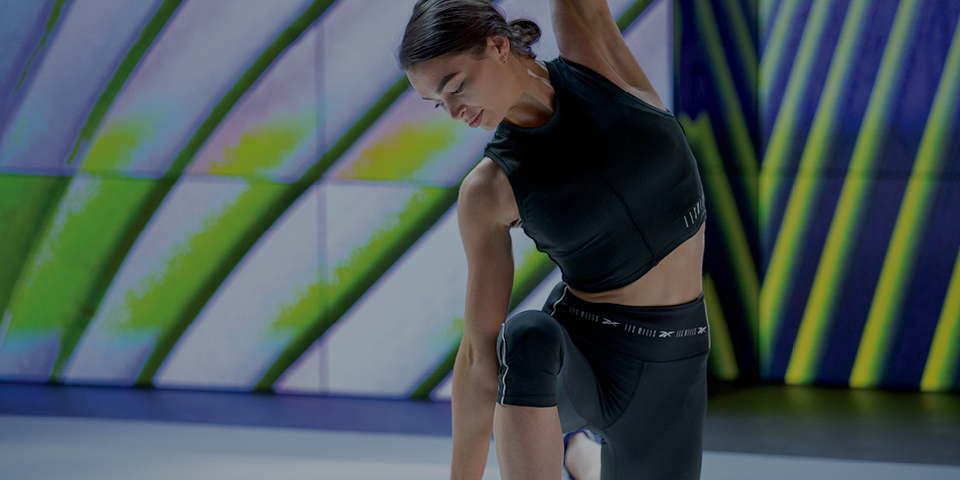For beginners to the fitness world, static stretching is a fantastic, low-impact activity that you can use to warm up for a work out session, improve flexibility, and expand your range of mobility and motion. By adding static stretching to your routine, you can improve your body's flexibility and range of motion, leading to better physical performance and overall health.
No matter if you’re at the beginning of your fitness journey, or simply looking to build upon and improve your work out plan, this guide explores the dos and don’ts of static stretching with practical exercise examples.
Introduction To Static Stretching
For all kinds of fitness training, static stretching is a useful tool, and when you stretch, you sustain a long and deliberate elongation of a muscle or muscle group. This helps dispel any tension that may exist in the muscle from sitting or standing in the same position for long periods of time.
Unlike dynamic stretching, which involves continuously moving the muscles, static stretching involves holding the stretch anywhere from 15 to 60 seconds at any one time (without any movement).
When you choose to do static stretching, the aim is to stretch the muscle to a point of slight discomfort but it is very important not to stretch until you are in pain. If you stretch to the point of pain, this is too much, and you’re risking injury to the muscle or muscle group. Usually, static stretches are used during warming up and cooling down during a workout. However, some people prefer to do independent static stretching sessions.
What makes static stretching perfect for beginners is that it doesn’t require any special equipment or clothing, and it can be done pretty much anywhere. Simple stretches are great for beginners to start stretching major muscles and muscle groups such as:
-
The chest
-
Shoulders
-
Calves
-
Quadriceps
-
Hamstrings
-
Wrist and ankle ligaments
As you progress with your stretching you’ll find yourself becoming more comfortable and flexible. As you do so, you’ll be able to start stretching further and deeper to progress your overall mobility. It is often best to stretch regularly and consistently to ensure you can progress.
Static Stretching Example Exercises
There exists a versatile range of effective stretching exercises for the host of bodily muscles everybody possesses. When incorporating stretches into your routine, you should focus on implementing a range of different techniques and exercises to enhance your overall bodily flexibility and mobility.
No matter if you're concentrating on your upper body, lower body, or core muscles, static stretches can be curated to meet the needs of your work out session and fitness goals. The following stretching exercises are not only good for the enhancement of your flexibility but also help to promote good posture, reduce muscle tension, and increase both muscle and mental relaxation.
By integrating a range of static stretches into your workout routine, you can also help prevent injuries while working out or going about day to day life. Let’s take a look at some practical static stretching examples:
Hamstring Stretch
-
This is a static stretch you’ll do when sitting down on the floor. Begin by sitting with one leg stretched out in front of you and the other leg tucked into a triangle shape (or a half sitting basket shape), with the sole of your tucked leg resting against the inner thigh of your straightened leg. Keep your back straight and slowly hinge forward at the hips while reaching for the toes of the extended leg with one or both your hands. Hold this stretch for around 15-30 seconds, ensuring you feel a gentle tug/stretch along your hamstring. Repeat the stretch on the other leg to avoid muscle imbalances and perform 2-3 stretches per leg to gain a full range of your stretching capabilities.
Thigh (quadricep) Stretch
-
Start by standing with your feet a shoulder-width apart. Bend your leg at the knee joint and reach down with your hand to grab the instep/top of your foot (this can be done with either leg). Gently pull your lower leg/ankle towards your glutes and hold the stretch for between 15-30 seconds. Be sure to keep your back straight and core engaged during this stretch to prevent injury. Repeat the stretch on the other leg and repeat for both legs 2-3 times.
Calf (lower leg) Stretch
-
Begin by standing with your hands against a wall for support. Step one foot back so that you're on the ball of that foot and gently press your heel towards the ground, keeping both legs straight and having a slight bend in your front knee for support. From this you should begin to feel your calf stretching. Lean forward towards the wall to intensify the stretch until you feel discomfort (but not pain). Hold this for 15-60 seconds and repeat for both legs 2-3 times.
Tricep (arm) Stretch
-
Start by standing or sitting whilst maintaining a straight back. Lift one arm overhead and bend the elbow, with your hand going towards your opposite shoulder blade. Take your opposite hand and gently press the elbow further back to feel the stretch in the back of your upper arm. Hold this position for around 15-30 seconds, then relax and repeat the exercise on the opposite arm. Again, repeat for both arms 2-3 times.
Shoulder Stretch
-
Begin by either standing or sitting keeping your back straight. Position one arm (either left or right) across your torso so that it is perpendicular to your body - this is the arm we will be stretching. Rest your second arm at a 90 degree hinged angle so that it is pulled on the forearm of your stretching arm. Pull your hinged arm towards your body and you’ll feel a stretch in your upper arm/shoulder area. Relax and repeat the stretch on the other side. Perform this stretch for 15-60 seconds, 2-3 times per side.
Benefits Of Static Stretching
Static stretching is a wonderful activity to warm the body up for a work out or to take on the day’s challenges. Making it a key component in your day or your work out will provide you with all kinds of benefits. Let’s delve into the benefits of static stretching:
Improving Mobility & Flexibility
-
Static stretching will gradually elongate your muscles which, over time, allows them to lengthen and improve your range of mobility. Increased flexibility helps individuals to carry out daily activities with ease and muscles are able to move more freely. Static stretching can also enhance athletic performance.
Reducing Muscle Tension
-
With static stretches, you are holding the position for an extended period, which can encourage the muscles to relax and release the tension that has built up. Incorporating static stretching into your routine can provide relief to your muscles and restore muscle balance. This is particularly important after an intense training routine.
Preventing Injury
-
Static stretching, through improving flexibility and muscle function, is vital in reducing the risk of fitness related injuries. Static stretching accomplishes this by slowly lengthening the muscles and increasing their range of motion. This means if an accident were to occur, your muscles will have a greater range of motion to absorb or deal with most of the strain; potentially turning a serious muscular injury into a minor one.
For these reasons, and many more, static stretching is a vital part of both warming up and cooling down after a workout. Don’t neglect your body!
Get Stretching With Village Gym
Get the full benefit of static stretching at Village Gym. With state-of-the-art facilities and cutting-edge equipment, Village Gym can help you reach your fitness goals. With a range of membership options available, you can choose a membership that suits your needs with convenient locations nationwide. Sign up to Village Gym today and unlock your full potential and maximise your static stretching.
FAQs About Static Stretching
Is static stretching beneficial for your body?
Yes, it is beneficial for your body. It increases your range of motion, improves flexibility and reduces muscle tension.
Is excessive static stretching bad for you?
Excessive stretching can negatively impact your body by reducing muscle strength and stability and increasing the risk of strains or injuries. It’s important to perform in moderation, avoiding pushing beyond your limits.
Should you perform static stretches every day?
It depends on your body and fitness levels. Although static stretching can enhance flexibility and mobility, overstretching can lead to reduced muscle strength and stability. Finding a balance and listening to your body is essential to get the most out of your stretching.


